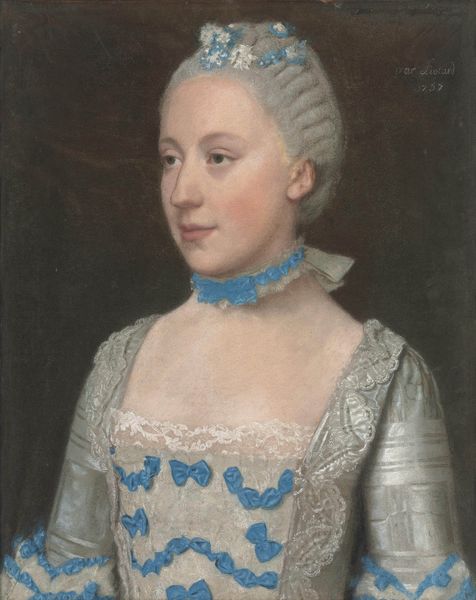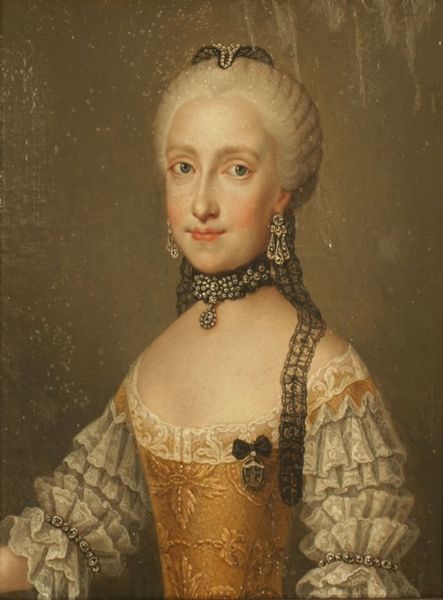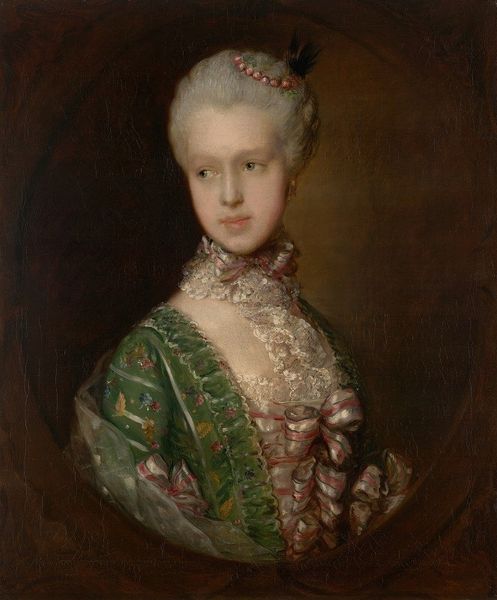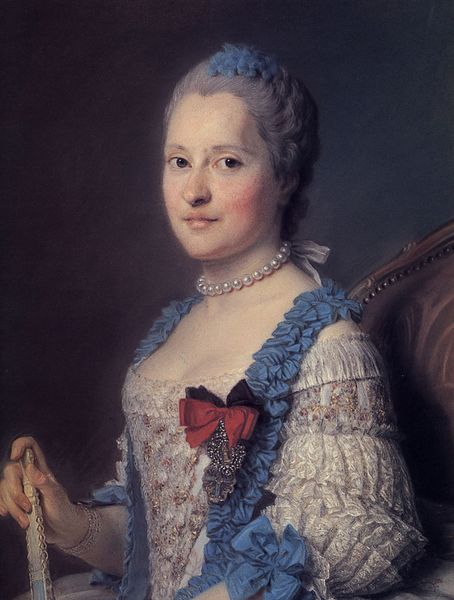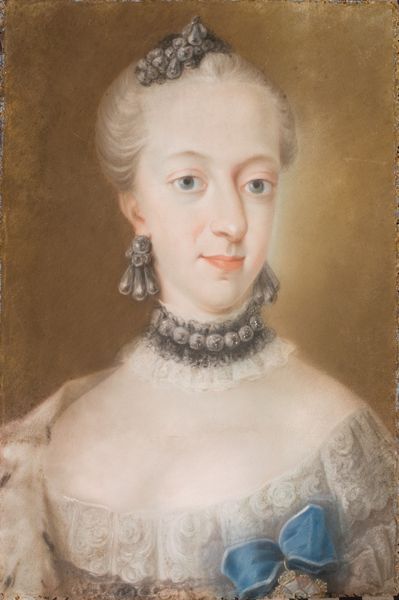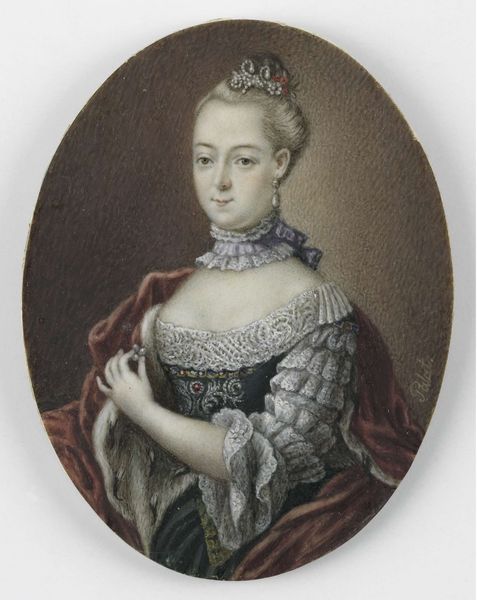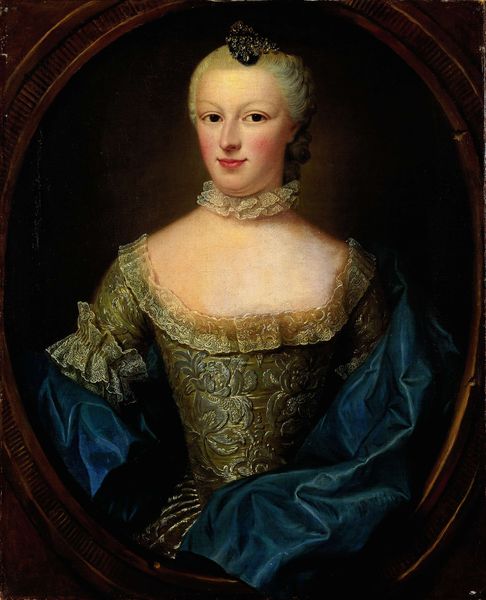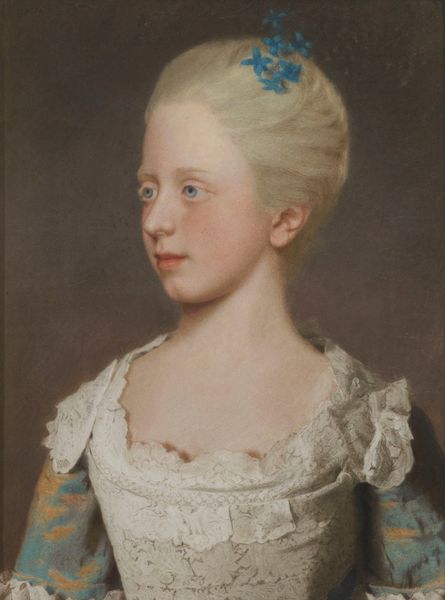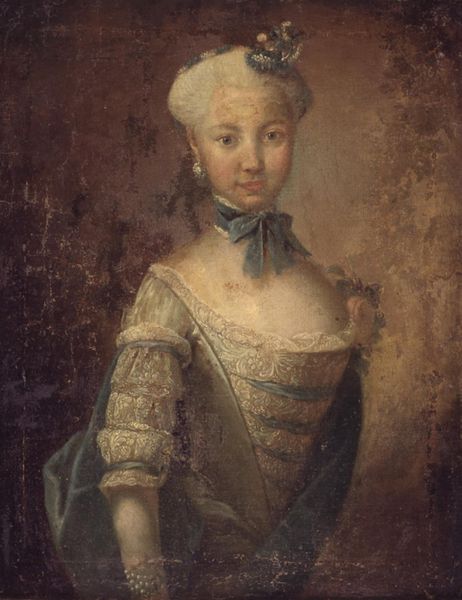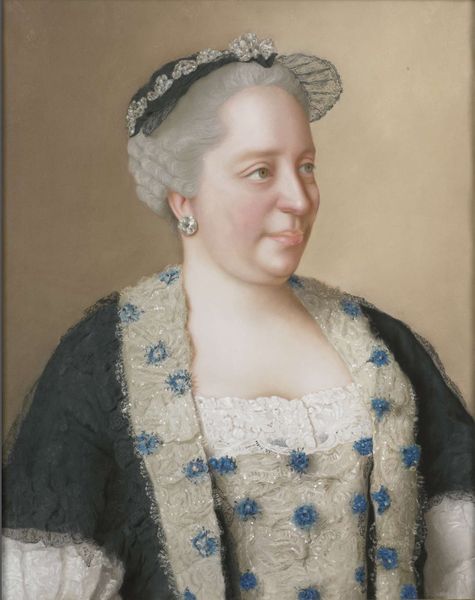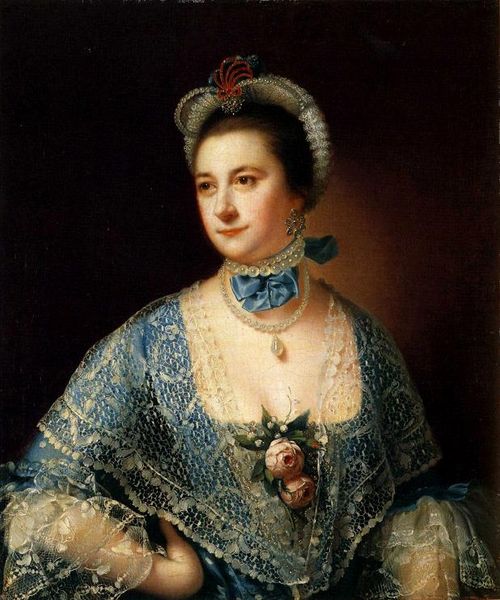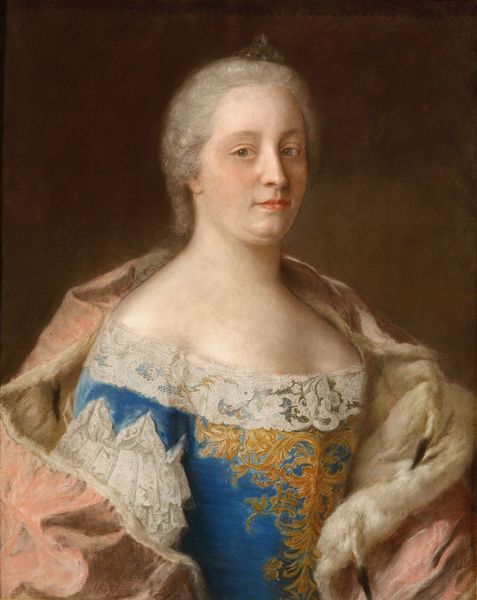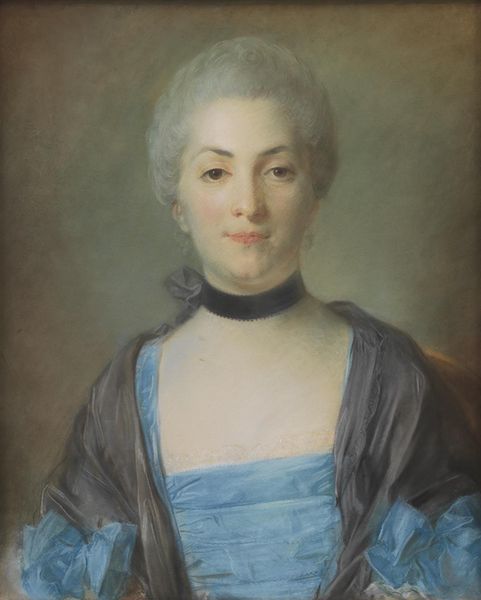
painting, pastel
#
portrait
#
portrait image
#
painting
#
portrait drawing
#
genre-painting
#
pastel
#
history-painting
#
facial portrait
#
portrait art
#
fine art portrait
#
rococo
Dimensions: height 41 cm, width 32.5 cm, weight 2.4 kg, height 113.6 cm, width 88.8 cm, thickness 6.3 cm
Copyright: Rijks Museum: Open Domain
Curator: Immediately, I’m struck by the softness, the almost ethereal quality of this portrait. Editor: Well, let's delve into why! What we have here is a pastel portrait of Maria Josepha of Saxony, Dauphine of France, created around 1749 by Jean-Étienne Liotard. It currently resides in the Rijksmuseum. Curator: Pastel, of course! That explains the gentle diffusion of light and color. The artist really captured a sense of serene refinement. What do you think about her face? She almost looks too idealized. Editor: The idealization is precisely the point! Liotard was very fashionable and sought-after. Rococo portraiture like this was less about absolute accuracy and more about projecting status, beauty, and grace, upholding royal representation in its image. Curator: True, and it's interesting to note how the flowers decorating her gown, combined with her chocker necklace, mirror the visual motifs we find recurring across the courts of Europe. Is that blue a deliberate nod to royalty, a kind of visual branding? Editor: Possibly. The colour would be rare and valuable at this time. More likely, it’s about aligning her with contemporary aesthetics. Also, consider how her pale complexion, achieved partly through cosmetics, signals aristocratic leisure—labor was literally something to be avoided! This image becomes an echo chamber where style, class, and power reflect each other. Curator: And what about the absence of a strong background? It almost feels as though the sitter is disconnected from a particular context, emphasizing the universality—or perhaps, timelessness—of her regal image. It enhances that almost iconic presentation. Editor: Precisely! The minimalist background isolates her, further cementing her status. Ultimately, portraits such as this reinforce hierarchies, showcasing wealth and belonging in society. They demonstrate visual displays of soft power, if you will. Curator: It gives us a way into an interesting exploration. Thanks for your thoughts. Editor: Indeed. Seeing these layers revealed really transforms my initial impression, adding a new significance.
Comments
rijksmuseum about 2 years ago
⋮
According to Liotard, the dauphine was so impressed by Liotard’s pastels, among them La Liseuse, that Liotard was invited to make portraits of almost the entire French royal family. This example, which Liotard kept for himself, is one of the most charming in its simple presentation of the newlywed young princess.
Join the conversation
Join millions of artists and users on Artera today and experience the ultimate creative platform.
